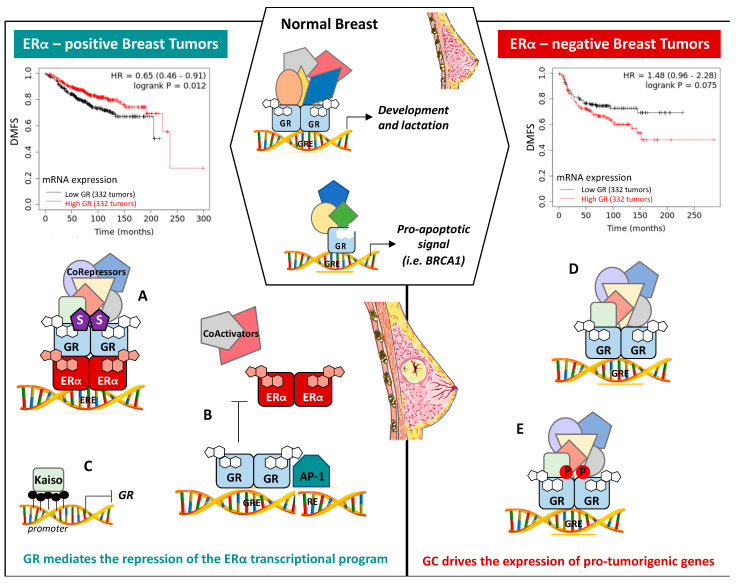Figure 5.
GR involvement in physiological and pathophysiological breast functions. Mammary gland development and lactation are regulated by GR in normal breasts. In addition, unliganded GR binds to the promoter region of some pro-apoptotic genes, such as BRCA1, upregulating their expression in non-malignant mammary cells. GR controls the outcome of BC depending on the ERα status of the tumor. In ERα-positive BCs, GR regulates the repression of the ERα transcriptional program by directly binding to ERα, promoting its sumoylation (S) and recruitment of corepressors (A), or in a composite manner by directly binding to AP-1 (B). In addition, in ERα-positive breast cancer cells, methyl-CpG islands in the GR promoter work as a binding site for Kaiso, resulting in the repression of GR expression (C). Conversely, in ERα-negative BCs, GR regulates pro-tumorigenic genes and is associated with a worse prognosis (D), and pS134-GR is found to be higher in TNBC in comparison with luminal BCs and associated with a migratory phenotype (E). Kaplan–Meier curves were built using KM plotter database [103].

